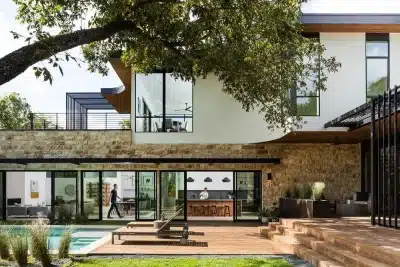Choosing a place to live is one of the most impactful decisions a person can make. Whether you’re relocating for a job, starting a new chapter in life, or simply seeking a better environment, the place you call home will shape your lifestyle, relationships, and daily experience. While it can be tempting to focus on surface-level attractions, such as a trendy neighborhood or a low rent price, the true value of a location lies in a more nuanced combination of factors. Evaluating aspects like cost of living, community, access to amenities, and future growth potential can help you make an informed and rewarding choice. This blog post explores nine important factors to keep in mind when deciding where to settle down.

Cost of Living and Affordability
When evaluating a new place to live, understanding the cost of living is crucial to ensuring long-term financial stability. This includes rent, mortgage payments, utilities, groceries, healthcare, and transportation. In some cities, housing may seem affordable on the surface, but hidden expenses can quickly add up. For example, when researching the best neighborhoods in New Orleans, it’s important to compare how far your income will stretch relative to day-to-day expenses and quality of life. Affordability is about finding a balance between cost and comfort that suits your lifestyle and budget without compromising vital needs.
Access to Healthcare and Medical Facilities
Quality healthcare shouldn’t be an afterthought. Even if you’re healthy now, having reliable access to hospitals, clinics, pharmacies, and specialists can become vital quickly. Evaluate how many healthcare providers are in the area, the quality of those institutions, and whether they are covered by your insurance. Consider proximity, wait times, and reputation as well. Particularly for families with children, seniors, or individuals with chronic conditions, easy access to medical care is a crucial component of a livable location.
Employment Opportunities and Economic Stability
Unless you’re retired or working remotely, job availability is a major determining factor in choosing where to live. Even if you’re already employed, it’s wise to consider the strength of the local economy and the job market in case your situation changes. Thriving cities with diverse industries tend to offer better job security and advancement prospects. Areas with a strong economic foundation are more likely to see continued development, investment, and infrastructure improvements, which can positively impact your quality of life and property value.
Safety and Crime Rates
Feeling safe in your community is foundational to your well-being. Researching local crime rates, including property and violent crimes, can offer insight into how secure a neighborhood is. Online databases and city websites often provide detailed statistics, while local forums or social media groups can give a more personal perspective. It’s worth considering whether safety resources like nearby police stations, street lighting, and community watch programs are available. A safe environment allows you to enjoy your home, raise a family, or walk around the neighborhood with peace of mind.
Education and School Quality
For those with children, or planning to have them, education is a top priority. Even for individuals without kids, living in a community with strong schools can elevate property values and support a more stable, connected environment. Review public and private school ratings, extracurricular opportunities, and district performance metrics. Proximity to higher education institutions can be beneficial, whether for continued learning, community enrichment, or employment opportunities.
Transportation and Commute Time
The ease with which you can get around plays a big role in your daily experience. A long, stressful commute can quickly erode the enjoyment of even the most beautiful home. Investigate public transportation options, traffic patterns, bike-friendliness, and walkability in the area. If you’re dependent on a car, check for adequate parking and road conditions. In urban environments, access to subways, buses, or light rail systems can save time and money. For rural areas, proximity to major highways or airports might matter more for travel and logistics.
Proximity to Family, Friends, and Social Connections
No matter how beautiful or practical a place may be, living far from your support network can lead to isolation. Social connections, like family, friends, or even professional networks, contribute immensely to emotional well-being and resilience. Consider how often you’d want to see loved ones and how easy or difficult that would be from a potential location. Even if you’re seeking a fresh start, researching the social culture or existing communities in a new area can help you gauge how easily you’ll integrate and build new relationships.
Lifestyle and Recreational Opportunities
Every individual has unique interests, and your surroundings should complement them. Think about how a place supports your hobbies, leisure activities, and preferred lifestyle. Do you love the outdoors? Consider proximity to parks, hiking trails, or bodies of water. Are you a foodie or a cultural enthusiast? Look for a vibrant restaurant scene, theaters, museums, or music venues. If fitness is important, access to gyms, yoga studios, or sports clubs can be valuable. An area that aligns with your values and interests will help you feel fulfilled and engaged.
Long-Term Growth and Real Estate Value
Whether you’re renting or buying, considering the prospects of a location is crucial. Areas undergoing growth, due to population increases, commercial development, or improved infrastructure, are likely to offer strong investment potential. Neighborhoods that attract young professionals, new businesses, or government investment often experience rising property values. At the same time, be cautious of overly inflated markets that may be unsustainable. Understanding zoning laws, planned developments, and economic forecasts can help you gauge whether a place will offer stability or volatility in the years ahead.
Community Culture and Environment
Last but not least, the social fabric of a place deeply affects how you feel day to day. This includes everything from the friendliness of neighbors to the cultural diversity, political climate, and even local traditions. Visit neighborhoods at different times of the day to observe their energy and vibe. Do people greet each other? Are there community events or farmers’ markets? Is the town more fast-paced or laid-back? These subtle cues can help you determine if you’ll feel at home in the long run. Finding a place where your values and lifestyle naturally mesh with the community can make a world of difference.

Selecting the right place to live goes far beyond the look of a home or the allure of a single attraction. It’s a complex decision influenced by financial, personal, social, and practical factors, all of which should be weighed carefully. By reflecting on these nine important considerations, you can ensure that your next move supports your goals, suits your lifestyle, and fosters your happiness. Take the time to do your research, visit potential neighborhoods, and envision your daily life in each setting before making your final decision. A well-chosen home base is the foundation for a fulfilling life.








